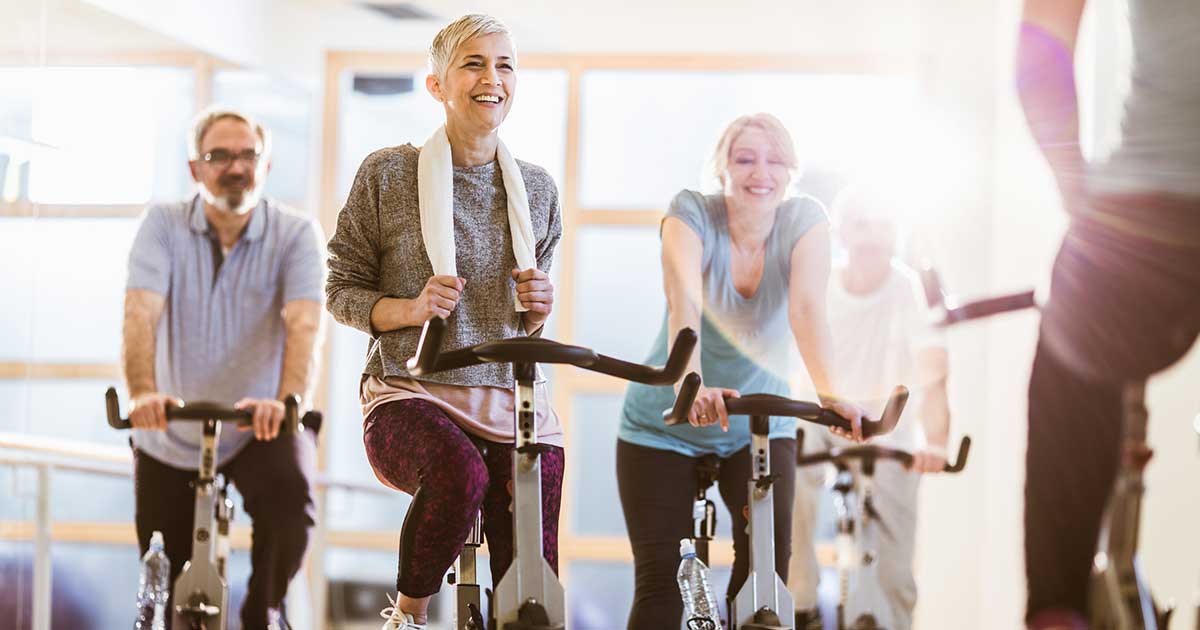
Advice to improve your movement, fitness, and overall health from the #1 in orthopedics in the U.S.
How to Prevent Falls at Home
Preparing both your home and your body as you get older can help you avoid this dangerous but common issue.
Advice to improve your movement, fitness, and overall health from the #1 in orthopedics in the U.S.
Every year, emergency departments around this country treat 3 million older people for injuries sustained in a fall. More than 800,000 of those people will be hospitalized.
Despite those big numbers, “getting older doesn’t mean you’re destined for an accident,” says Brianne Mooney, PT, DPT, SFMA, a physical therapist at HSS. With the proper preparation, you can keep falls from happening.

Create a Personalized Fall Protection Plan
The first step should be to schedule an appointment with your primary doctor. At the meeting, you should:
- Talk about specific things you can do to prevent falls.
- Review your medications and supplements to see if any might make you dizzy or drowsy.
- Check your eyes and update your prescription if necessary.
- Ask if you’re getting enough hydration.
- Discuss what you’re eating to make sure you’re getting the right nutrients to keep and build muscle.
Think about Your Everyday Actions
A lot of falls prevention is awareness of your body, both how you move and where you are in relation to things that could cause you to trip. For example, know where your pets are at all times—it’s more common than you’d think for you to trip over them.
Mooney also suggests moving more carefully and thoughtfully in general. When you go from lying down or sitting to standing up, or vice versa, go slowly. Pause, take a few breaths, and do a quick body scan before moving to make sure you have your bearings.
Never stand on a chair or table to reach something high up. Invest in a reach stick, a special tool available at a hardware or medical supply store. “And don’t be afraid to ask others for help,” Mooney adds.
For added safety, carry your phone with you at all times. “Some phones have technology to detect when you’ve fallen,” says Mooney. Or subscribe to Life Alert or a similar service that can let someone know if you’ve taken a tumble.
Hazard-Proof Your House
Removing dangers doesn’t mean you have to fully gut renovate your house. Just a few basic changes can prevent the most common mishaps. Go through your home room by room with a friend, spouse, or an adult child. “A physical therapist can also come to your home to evaluate the safety and see what needs to be changed,” says Mooney. Pay particularly close attention to your kitchen and bathrooms, which tend to be slippery.
Some general tips:
- Clear the clutter. You don’t want to slip on old newspapers, piles of papers, or an out-of-place dog toy. Make sure you keep what’s not supposed to be on the floor off of it, particularly at the top and bottom of the stairway, in hallways, and in the bedroom.
- Keep your house well-lit. Double check that all your lights have working bulbs at the brightest light recommended for the fixture. Inspect your home and take notice of any dark areas. Make sure you keep a light on in the hallways and bathroom all night or install motion-sensor night lights.
- Never walk around the house in socks. If you really hate to wear shoes inside, invest in some grip-soled socks.
- Make sure all the carpets and rugs are fastened down well. If any edges come up or a rug moves—even the slightest bit—secure them with double-sided tape or no-slip strips. Take extra care to examine the rugs in the bathrooms, in hallways, and on porches.
- Keep electrical cords away from walking paths and arrange all your furniture so that nothing blocks your path.
- Evaluate your furniture—is everything sturdy? “Nothing should be wobbly or on wheels,” says Mooney.
- Keep your most commonly used items close. Place kitchen items (plates, glasses, etc.), your dog’s food, your coffeemaker, and anything else you use on a daily basis on the lowest shelves and make sure they’re easily accessible.
Add Strengthening to Your Routine
Finally, as you age, it’s important to ensure that your body is as strong as it can be, so you can avoid falls in the first place or have an easier time recovering should you sustain one. The priority areas to build strength in are your legs and lower body. Before starting these exercises, see a PT for an evaluation if you:
- Feel unsteady
- Regularly use a walker or a cane
- Have any issues that limit your ability to exercise, such as arthritis or a previous injury
- Suffer with pain so severe it makes it difficult to move normally
- Have fallen in the past
Even if you don’t have any of these issues, a PT can assess your personal strengths and weaknesses and help you create a strength, mobility, and balance program that’s tailored specifically for you.
Mooney recommends these general exercises to get started. Remember to always hold on to something and make sure you do the exercises on a safe, steady surface. And as always, if you feel any pain during these exercises, stop doing them and consult a physical therapist or other professional.
Sit to Stand
- Sit upright on a chair and hold on to something sturdy (the wall next to you, a countertop, etc.).
- Squeeze your glutes and slowly and steadily rise from the chair.
- Remember to keep your head up—your nose should be above your toes—and rely on your glutes, not your knees, to stand.
- Keep all four points of the bottom of your feet (right and left sides of your toe mounds and heels) evenly on the ground.
- Slowly and steadily sit back down.
Seated Knee Extensions
- Sit upright on a chair.
- Hold on to the bottom of the chair with your hands.
- Keeping the back of your thigh on the chair, straighten your right leg by kicking your foot out.
- Lower it down.
- Repeat with the left leg.
- You should feel this in your quadriceps (the top of your upper thigh).
Standing Heel Raises
- Stand with your feet hip-width apart.
- Holding on to something sturdy, slowly raise your heels off the ground.
- Slowly come back down.
- Remember to stay in control for the entire up and down motion.
Seated March
- Sit upright on a chair with your feet flat on the floor.
- Hold on to the bottom of the chair with your hands.
- Lift your right knee toward the ceiling slightly, then place your foot back on the floor.
- Repeat with your left knee, switching back and forth.
- As you get stronger, you can lift the knees higher and higher.
- Eventually, when you feel strong enough, you can do this in a standing position.
Published 8/28/2023


